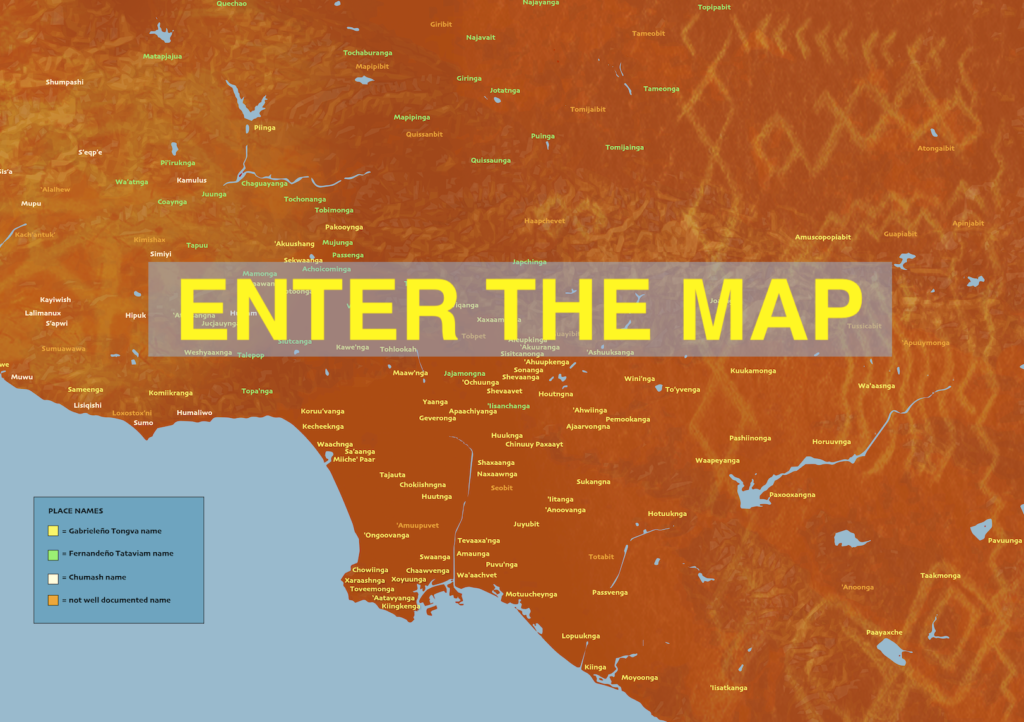Maps proclaim “This is here.”
We overlay a conventional, contemporary map with one of Indigenous settlement names and provide an interactive slider so that viewers can make the connection between the two worldviews. Bringing together a variety of Native map sources, we can appreciate how richly populated the region was and the diversity of cultures that co-existed. Conveying a more fluid sense of territories, this map does not focus on pinpointing locations but rather affirms the names of places that have been here.
LA County is endowed with one of the largest urban Native populations in the United States. The local tribes are speaking for themselves and actively working for land justice and cultural thriving. We link to several below and encourage you to engage directly with them. We also include a map layer of Spanish and Mexican ranchos with another opacity slider to see how their land grant system overlays with the indigenous and has etched many of the place names that persist today.
